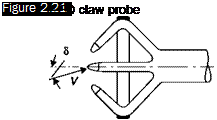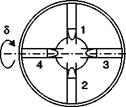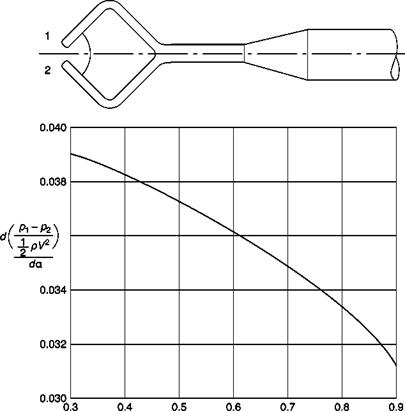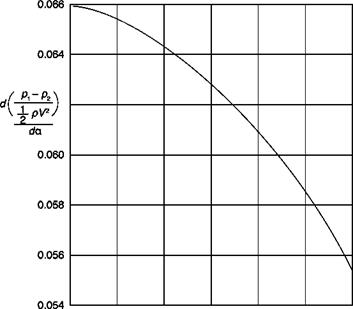Claw probe
This probe consists of two Pitot tubes, inclined at ±45° with the axis of the probe (Figure 2.20). This probe is commonly used because it is easy
|
Claw probe; variation of sensitivity with Mach number
M |
to build but has some serious drawbacks: the structure is delicate and can easily be deformed with use; tube diameters, to reduce the distance, are small and show a slow response.
One version of the claw probe, to be used in the three-dimensional field, is sketched in Figure 2.21. It consists of four tubes which lie in pairs in two planes perpendicular to each other. There is also a version with five tubes with a central tube for the measurement of p0. Also the static pressure can be calculated through the use of appropriate empirical constants by combining the reading of the Pitot tube with that of one of the directional tubes. This probe suffers from the same limitations as the two-dimensional probe, and does not allow measurements in the vicinity of a wall.
The Y probe (Figure 2.22) has a higher sensitivity but, due to the
 |

Ifb £~b
 Y probe; variation of sensitivity with Mach number
Y probe; variation of sensitivity with Mach number
|

greater distance between the taps, is not suitable for measurements in the presence of gradients of velocity.













